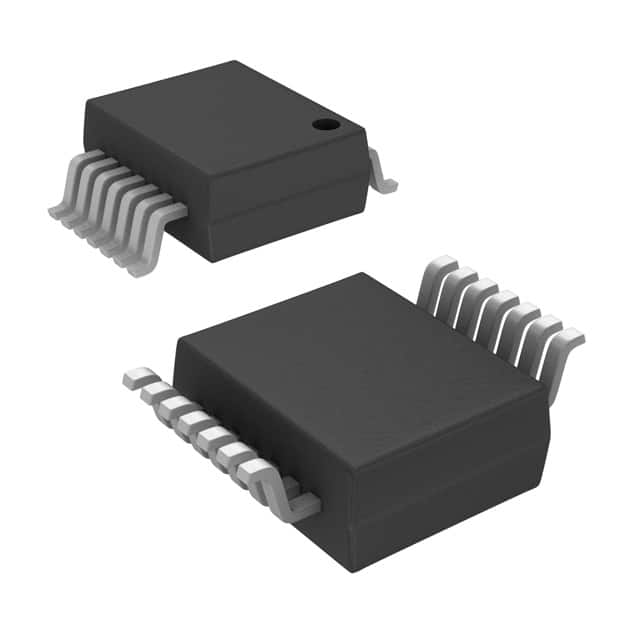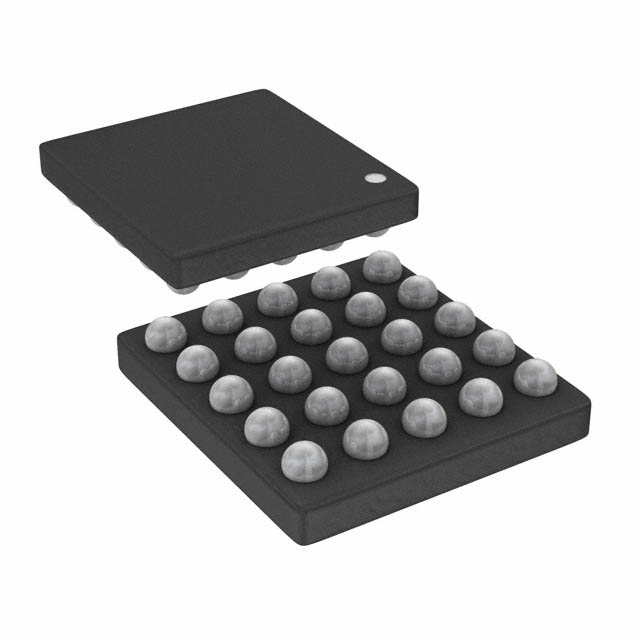Ⅰ. Interface - I/O Expanders
Ⅱ. Physical Characteristics of Interface - I/O Expanders
Ⅲ. Electrical Characteristics of Interface - I/O Expanders
I/O expanders are interface devices used to expand the input and output capabilities of microcontrollers or other digital systems. They allow for the control and monitoring of a larger number of external devices or sensors when the available I/O pins on the microcontroller are limited. I/O expanders provide additional digital input and output ports that can be controlled and read by the microcontroller through a communication interface such as I2C or SPI.

Here are some key aspects of I/O expanders:
1.Increased I/O Capacity: The primary purpose of an I/O expander is to expand the number of available input and output pins. They typically provide several digital input and output ports that can be independently controlled by the microcontroller. This enables the connection of a larger number of devices, such as switches, buttons, LEDs, sensors, or actuators.
2.Communication Interface: I/O expanders communicate with the microcontroller or digital system through standard communication interfaces like I2C (Inter-Integrated Circuit) or SPI (Serial Peripheral Interface). These interfaces allow for bi-directional data transfer, enabling the microcontroller to read input states and control output states of the I/O expander.
3.Addressing: Multiple I/O expanders can be connected to a single microcontroller using the same communication bus. Each expander has a unique address that is set using hardware or software configuration pins. This allows the microcontroller to individually address and control each I/O expander on the bus.
4.GPIO Functionality: I/O expanders provide General-Purpose Input/Output (GPIO) pins that can be configured as inputs or outputs. The microcontroller can set the direction (input or output) and read or write the state of each pin individually. This flexibility enables interfacing with a wide range of external devices or circuits.
5.Interrupts: Some I/O expanders have interrupt capabilities, allowing them to generate an interrupt signal to the microcontroller when a specific input changes state. This feature reduces the need for continuous polling of input pins, improving system efficiency and responsiveness.
6.Power Supply Considerations: I/O expanders may require a separate power supply or can be powered from the microcontroller's supply. It is essential to ensure proper power supply voltage levels and current capacity for reliable operation.
7.Integration and Compatibility: I/O expanders are available as standalone integrated circuits (ICs) or as part of larger ICs with additional features. They are designed to be easily integrated into the system, with compatible voltage levels, pin configurations, and communication interfaces.
I/O expanders are widely used in various applications, including home automation, industrial control systems, robotics, and IoT devices, where the number of I/O pins on the microcontroller may be insufficient. They provide a cost-effective solution for expanding the input and output capabilities of digital systems without the need for additional microcontrollers or complex wiring.
Physical Characteristics of Interface - I/O Expanders
The physical characteristics of interface I/O expanders can vary depending on the specific product and manufacturer. However, there are some common physical characteristics to consider:
1.Package Type: I/O expanders are typically available in integrated circuit (IC) packages such as Dual In-Line Package (DIP), Small Outline Integrated Circuit (SOIC), Quad Flat Package (QFP), or Ball Grid Array (BGA). The package type determines the physical dimensions and pin configuration of the I/O expander, and it is important to select a package that is compatible with the system's requirements and the available board space.
2.Pin Configuration: I/O expanders have a certain number of pins for connecting to the microcontroller or digital system. The pin count can vary depending on the specific model and functionality of the I/O expander. Common pin configurations include 8, 16, 24, or more pins. The pinout and pin assignment should be carefully reviewed to ensure compatibility with the system's design and layout.
3.Mounting Options: I/O expanders can be mounted on a printed circuit board (PCB) using various mounting techniques. They may have through-hole pins for soldering into plated through-holes on the PCB, or they may have surface-mount pads for mounting using surface mount technology (SMT). The mounting option should match the PCB assembly method and manufacturing requirements.
4.Power Supply Requirements: I/O expanders require a power supply to operate. The power supply requirements, such as voltage levels and current ratings, should be considered during the system design and selection of the I/O expander. Some I/O expanders may have specific power supply pins, while others may derive power from the microcontroller or digital system.
5.Communication Interface: I/O expanders communicate with the microcontroller or digital system using standard communication interfaces like I2C or SPI. The physical connections for these interfaces, such as serial data (SDA) and serial clock (SCL) lines for I2C, or data input (DI) and data output (DO) lines for SPI, should be considered when designing the PCB layout and making the necessary connections.
6.Environmental Considerations: Depending on the application environment, I/O expanders may need additional protection or features to ensure reliable operation. This can include features like conformal coating, ESD protection, or temperature ranges suitable for the intended application. It is important to review the datasheet and specifications of the I/O expander to ensure it meets the environmental requirements of the system.
It is crucial to refer to the datasheets and specifications provided by the I/O expander manufacturers for detailed information on the physical characteristics of a specific product. Understanding these physical characteristics helps in selecting the appropriate I/O expander that can be easily integrated into the system and meet the requirements of the application.

Electrical Characteristics of Interface - I/O Expanders
The electrical characteristics of interface I/O expanders play a crucial role in their proper functioning and integration with the microcontroller or digital system. Here are some important electrical characteristics to consider:
1.Supply Voltage: I/O expanders require a supply voltage for operation. It is essential to ensure that the supply voltage matches the requirements specified by the I/O expander datasheet. Common supply voltage levels for I/O expanders include 3.3V and 5V, although other voltage levels may be available depending on the specific device.
2.Logic Levels: I/O expanders operate based on specific logic levels for input and output signals. It is important to ensure that the logic levels of the I/O expander are compatible with the microcontroller or digital system it is interfacing with. This includes considering voltage levels for logic high (e.g., VCC or VDD) and logic low (e.g., GND), as well as the voltage threshold for detecting high or low states.
3.4Input/Output Characteristics: The I/O expanders may have specific input and output characteristics that should be considered. This includes characteristics such as input leakage current, output drive strength, input capacitance, and output current sourcing or sinking capabilities. These characteristics ensure proper signal transfer and compatibility with the connected devices.
4.Communication Interface: I/O expanders use communication interfaces like I2C or SPI to communicate with the microcontroller or digital system. It is important to ensure that the communication interface of the I/O expander is compatible with the microcontroller's communication capabilities. This includes considering parameters such as voltage levels, communication speed, and timing requirements for the interface.
5.Interrupt Capabilities: Some I/O expanders provide interrupt functionality, allowing them to generate interrupt signals to the microcontroller when specific events occur, such as a change in input state. The electrical characteristics of the interrupt signal, such as voltage levels and timing, should be compatible with the microcontroller's interrupt input requirements.
6.Power Consumption: The power consumption of the I/O expander is an important consideration, particularly in low-power or battery-operated applications. It is important to evaluate the standby or idle power consumption, as well as the power consumption during active operation, to ensure efficient utilization of power resources.
7.ESD Protection: Electrostatic discharge (ESD) protection is essential to prevent damage to the I/O expander due to electrostatic discharge events. It is important to consider the ESD protection level specified by the I/O expander manufacturer to ensure the robustness and reliability of the device.
These electrical characteristics may vary depending on the specific I/O expander model and manufacturer. It is important to refer to the datasheets and specifications provided by the manufacturer for detailed information on the electrical characteristics of a specific I/O expander. This ensures proper integration and compatibility with the microcontroller or digital system while meeting the requirements of the application.



